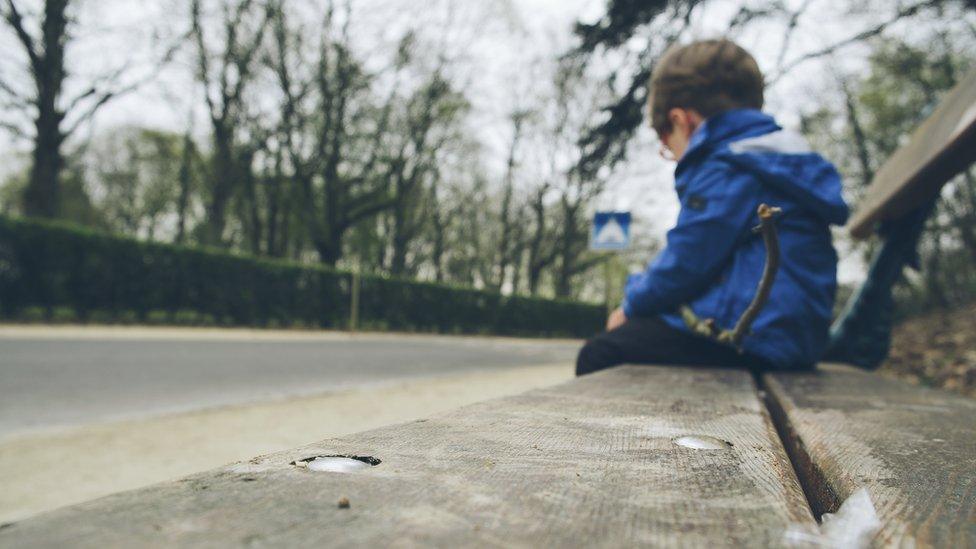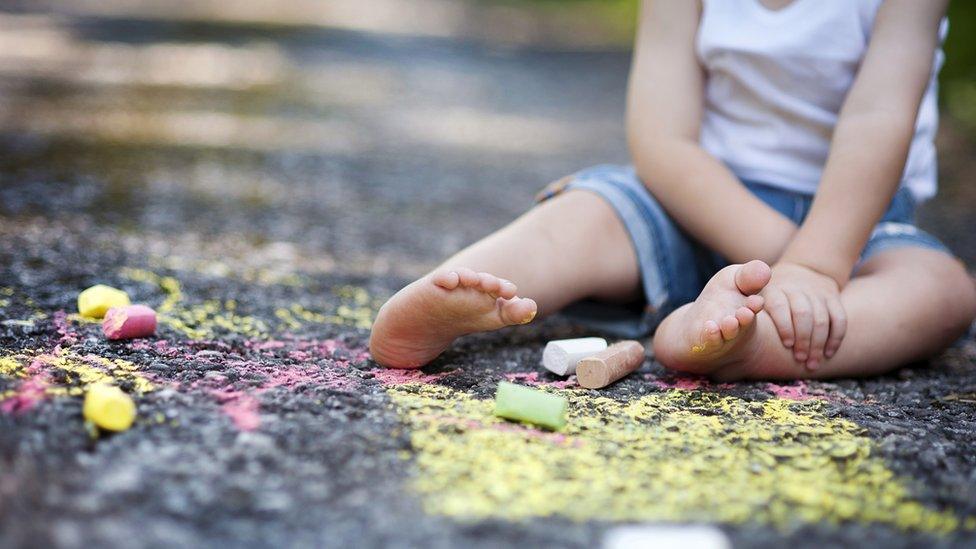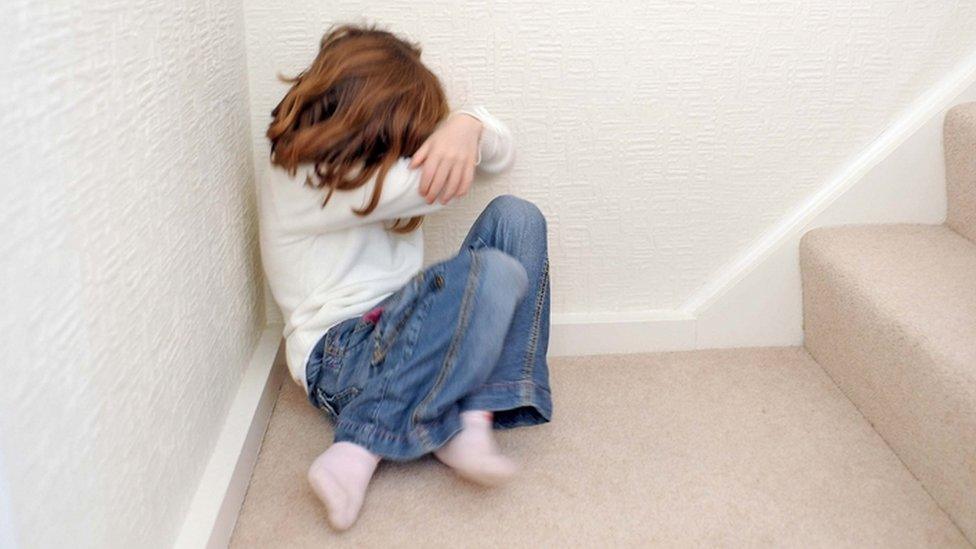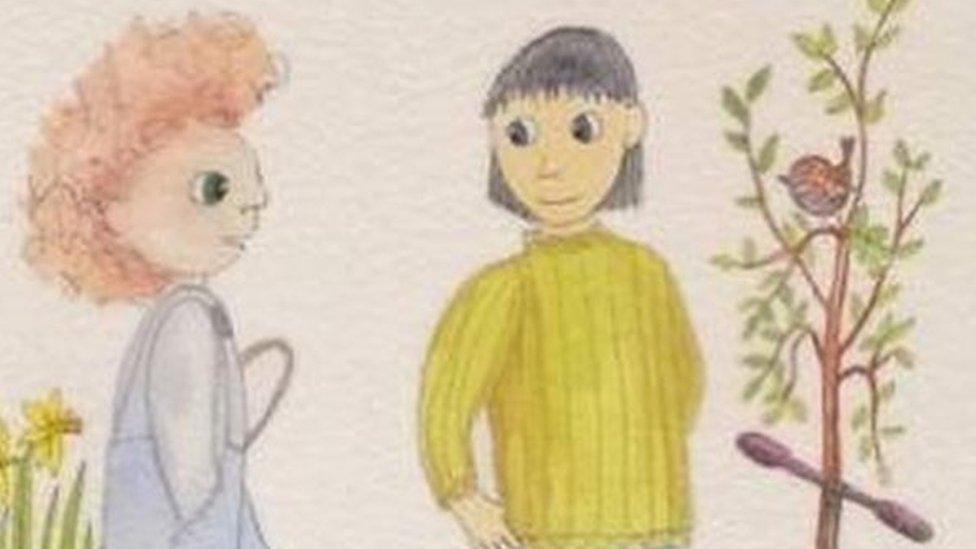NICE advice to look for 'soft' signs of child abuse
- Published

Teachers, police officers, nursery staff and other professionals should look for "soft" signs that could indicate that a child is being abused or neglected, new guidelines suggest.
Signs may include excessive clinginess, low self-esteem, recurrent nightmares or over-friendliness towards strangers.
The draft guidance from NICE - the National Institute for Health and Care Excellence - is open for consultation.
NICE's deputy chief executive said it was "permission to be curious"
NICE was asked by the Department for Education and the Department of Health to produce information for professionals working with children across a range of settings including social care, schools, early years settings, medical centres or custodial settings.
It says adults working with children should be alert to abuse and neglect if a child displays behaviours that are not normal for the child or for their age.
Gillian Leng, deputy chief executive of Nice, tells Today that the "soft signs" of abuse can't be ignored
Professionals should look out for signs like:
Low self-esteem
Wetting and soiling
Recurrent nightmares
Aggressive behaviour
Withdrawing communication
Habitual body rocking
Indiscriminate contact or affection seeking
Over-friendliness towards strangers
Excessive clinginess
Persistently seeking attention.
However, the guidelines say some signs are a matter of such concern that social services should be contacted straight away.
These include a child regularly attending school unclean or with injuries, overtly sexual behaviours in children who are below the age of puberty, and parents using excessive physical punishment.
Dr Danya Glaser, a consultant child and adolescent psychiatrist and member of the NICE guideline development committee, said professionals should use their instinct and experience to make a judgement.
"It's probably a mixture of instinct and experience. It's about [noticing] some change in behaviour if you know the child."
Dr Glaser said there was "far more under-recognition" of child abuse than over-reporting of cases that then turned out to be untrue.
"We are saying err on the side of curiosity - it might be nothing but it might be something."

Prof Corinne May-Chahal, chairwoman of the committee developing the guidelines, said the guidance would help professionals spot signs of abuse and focus on what help can be provided.
"The guideline gives examples of soft signs, the behaviours or emotions a child is exhibiting, which could indicate something may be wrong.
"These may not always be proof of abuse or neglect taking place, but they underline when to check on a child's wellbeing."

Child abuse figures
Figures compiled by the charity the NSPCC show there are more than 57,000 children in the UK who have been identified as needing protection from abuse
The charity estimates that for every child identified as needing protection from abuse, another eight are suffering abuse;
One in 20 children in the UK has been sexually abused
One in 14 has been physically abused

Prof Gillian Leng, deputy chief executive at NICE said: "We want all professionals to be aware and recognise when they need to ask questions or follow up with colleagues about a child's wellbeing.
"Not all cases will cause concern but if we do not ask, we may miss opportunities to protect children in their time of need.
"I guess we can be a bit British and perhaps aren't curious enough and think we shouldn't ask the questions, so I guess (the guideline is) permission to be curious."
A public consultation, external on the draft guidelines will run until 19 April.
- Published25 May 2016

- Published29 November 2016
